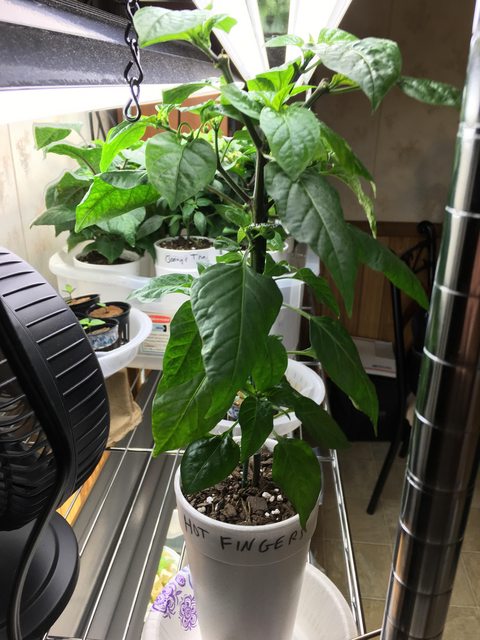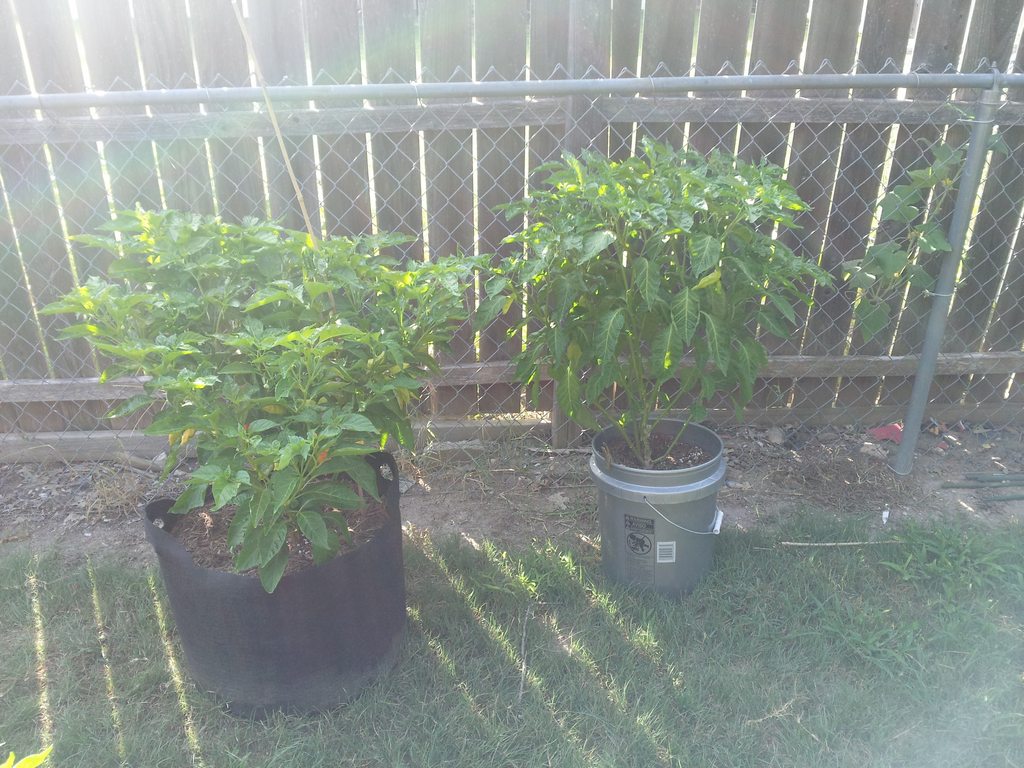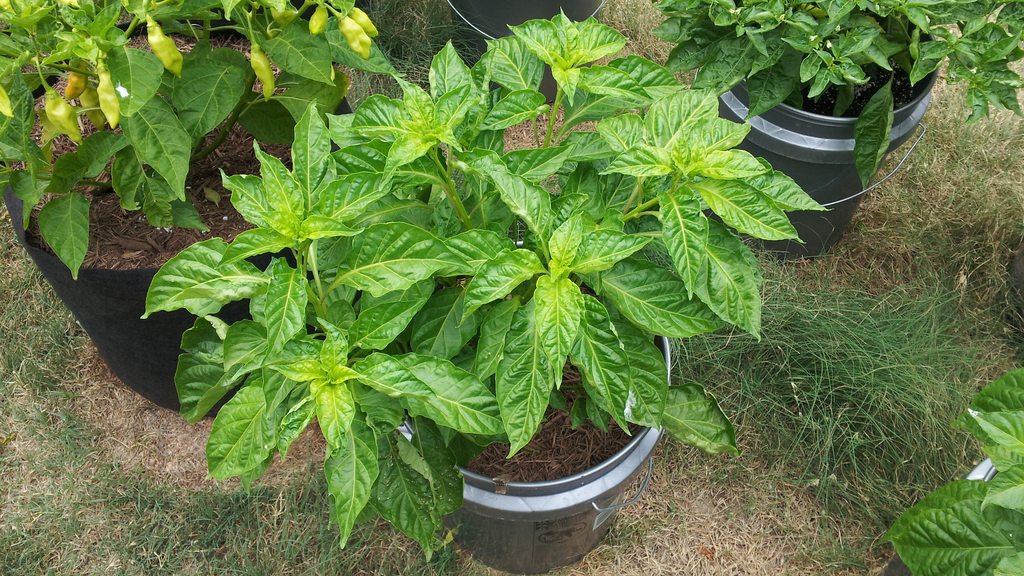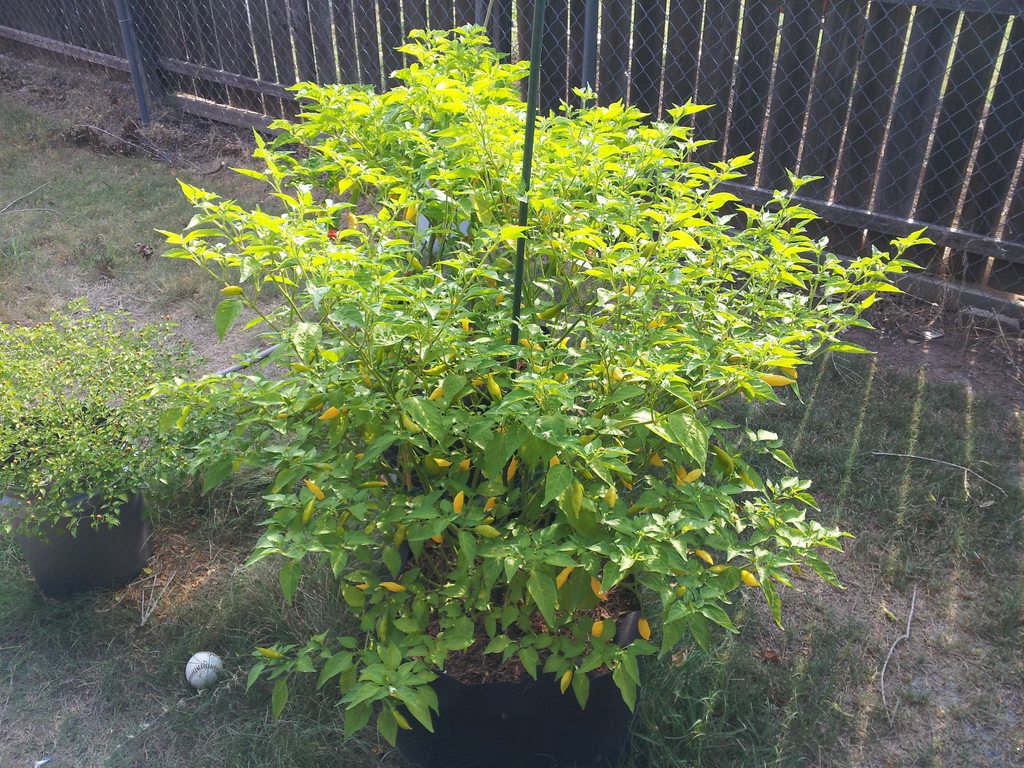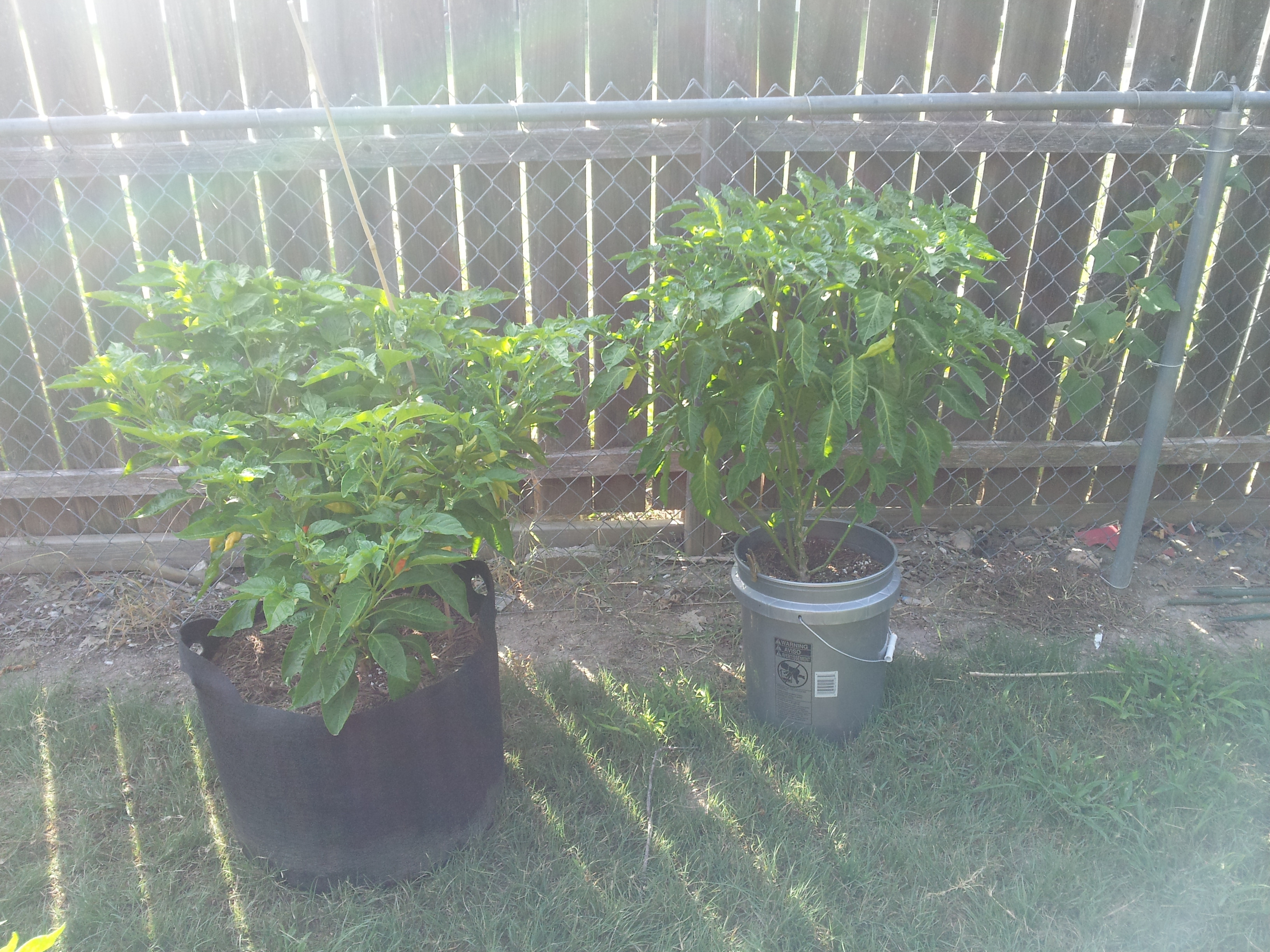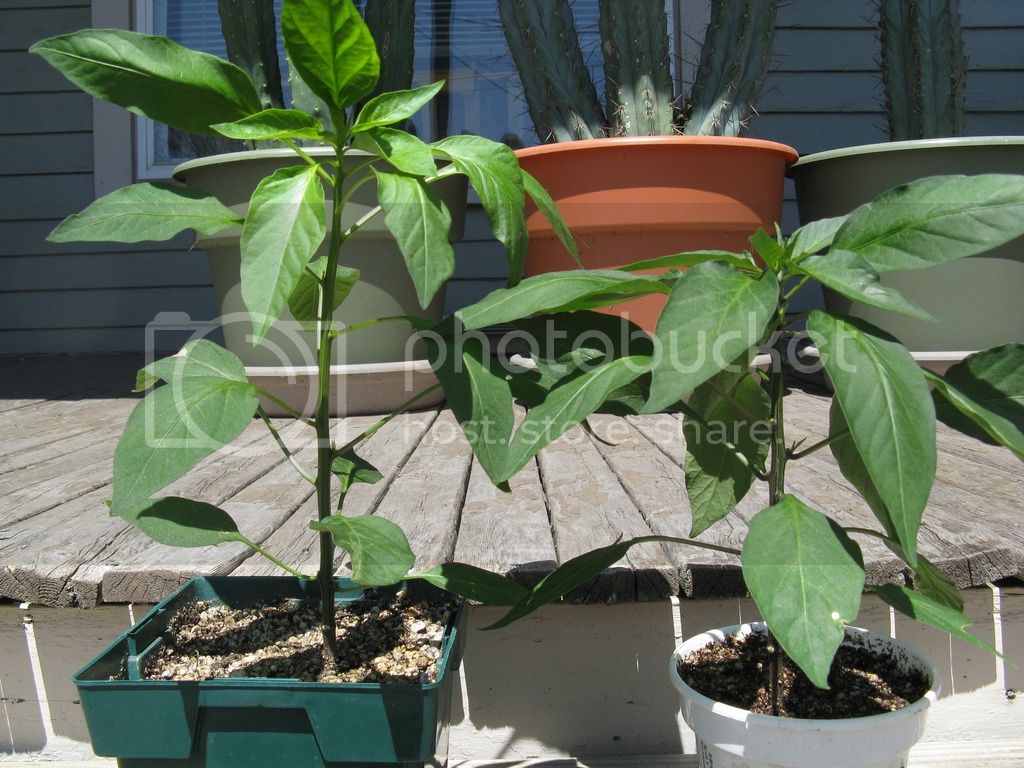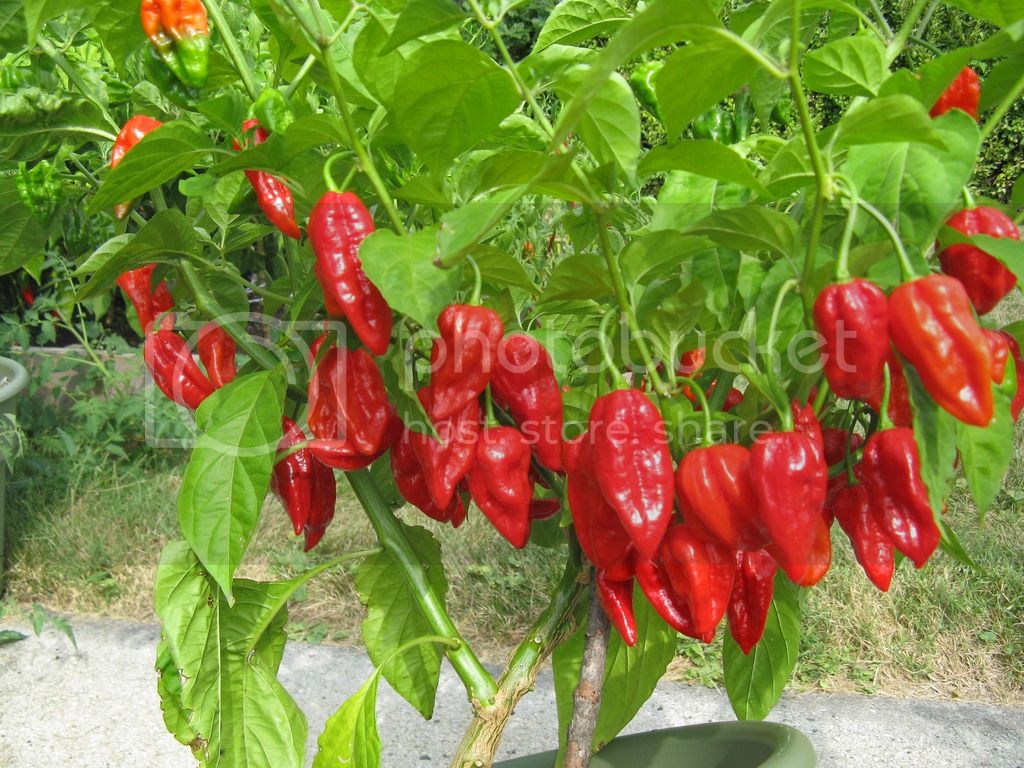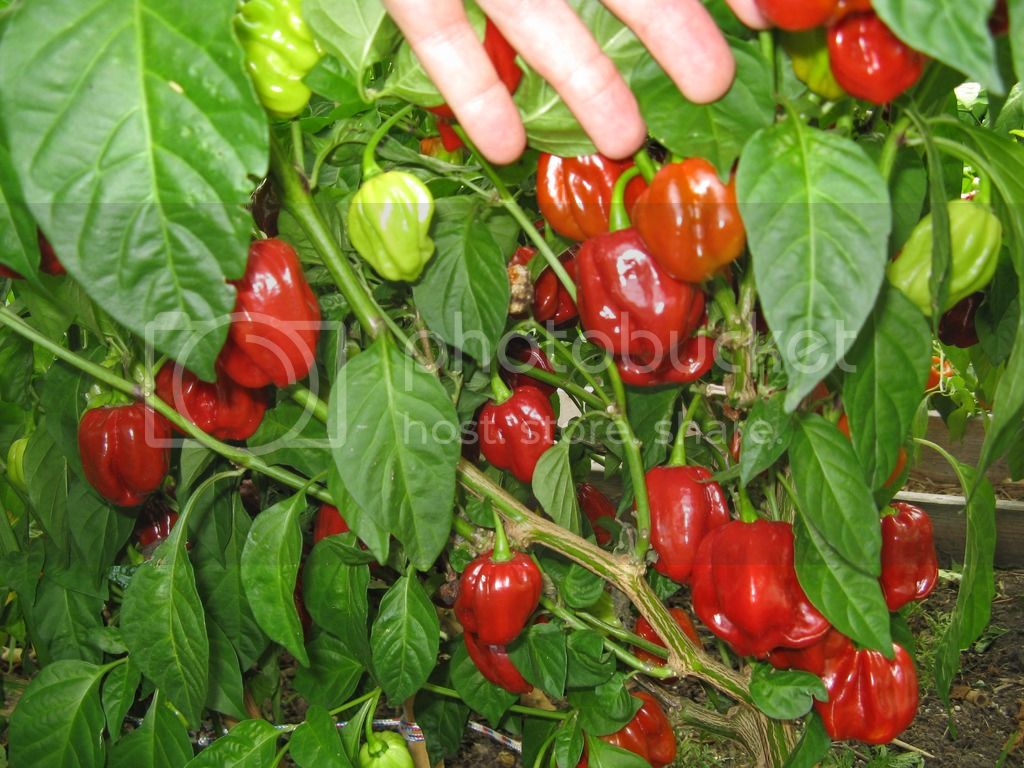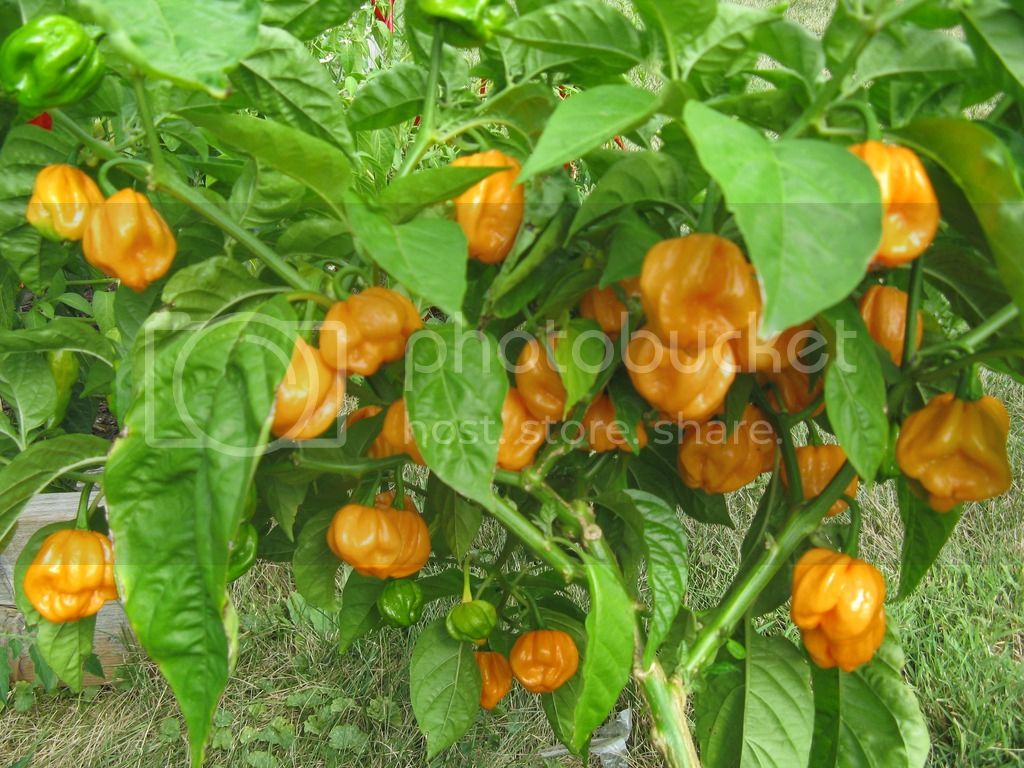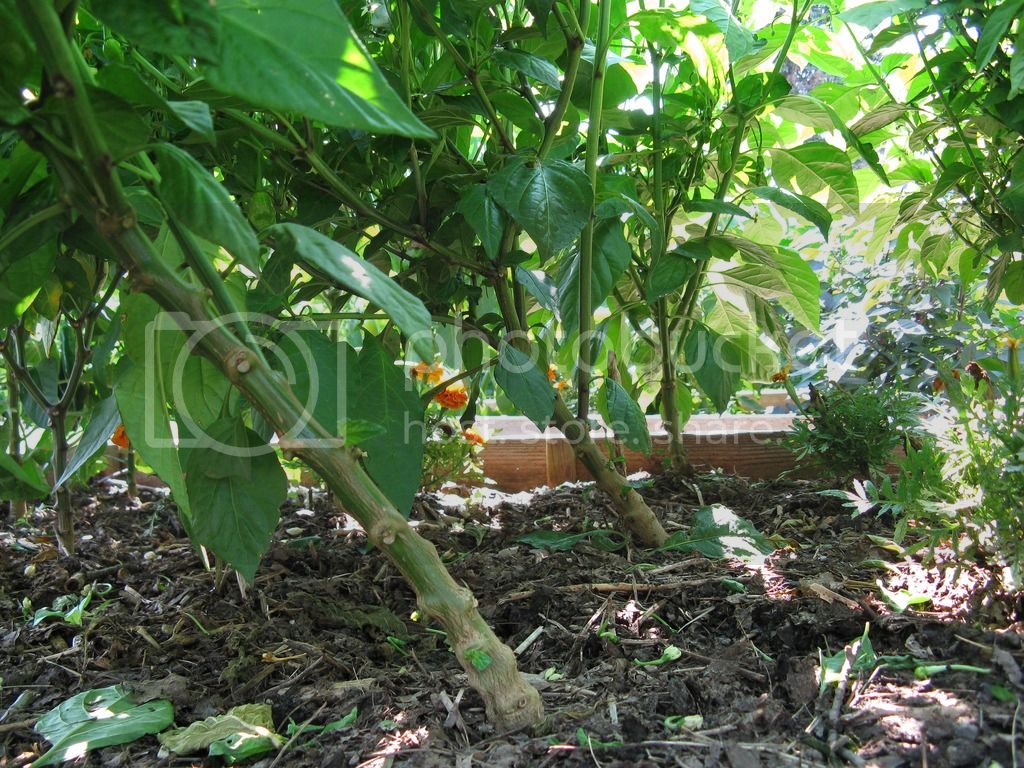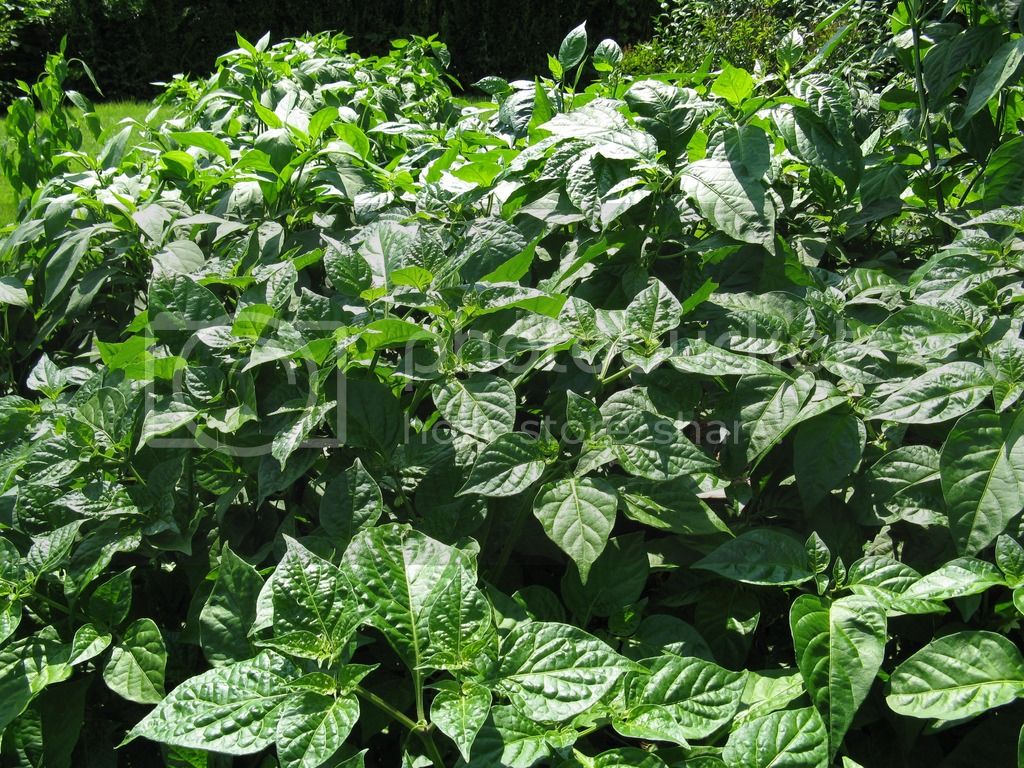I never top my plants. In fact the little structural pruning I do is actually the opposite of topping.
I let my plants grow naturally until they're about four months old, then I remove all buds (leave the leaves) on the lowest 3"-6" of the stem (depending on the size of the plant). Of the remaining buds on the stem, I select maybe 2 to 6 of them (again depends on the size and habit of the plant) to grow on to become scaffold branches. These branch buds are selected based on health, size, and how they are spaced apart on the stem relative to the others I'm keeping.
Lets say I just potted up this guy and am going to determine how I want him to grow. This plant has recently forked, so I know roughly how long the stem is going to end up being.
I would remove all shoots from about the lower half of the stem. Then I would pick probably three or four buds on the upper part of the stem to save. I usually don't keep adjacent shoots and I only keep shoots that are growing in a different direction than their neighbors.
It sounds picky, and it is, but helps my plants greatly in the long run. My pods stay off the ground, I select for strong branches so fewer snap during storms or with pod weight, foliage is up off the ground so slugs can't climb on and rain can't splash it, increased airflow around plants encourages drying after rain or dew and discourages foliar disease
Here are some plants where you can see the attachments of some of the scaffold branches I left on the stem, below the fork:
Here's a row in a raised bed: Having the surface of your soil or mulch open and aired out like this really helps keep things from getting stagnant and moldy during rainy/humid stretches.
This is a shot of that same raised bed ^ from the same angle, except standing instead of crouched on the ground. I don't believe that topping plants necessarily makes them any bushier, it just seems to make them bush out closer to the ground. Probably a good idea where it's windy and dry, but not smart where I live. BLS
loves topped plants. This shot is just to illustrate how far behind they are since I didn't top them. So lanky and thin. I probably won't get any pods.




